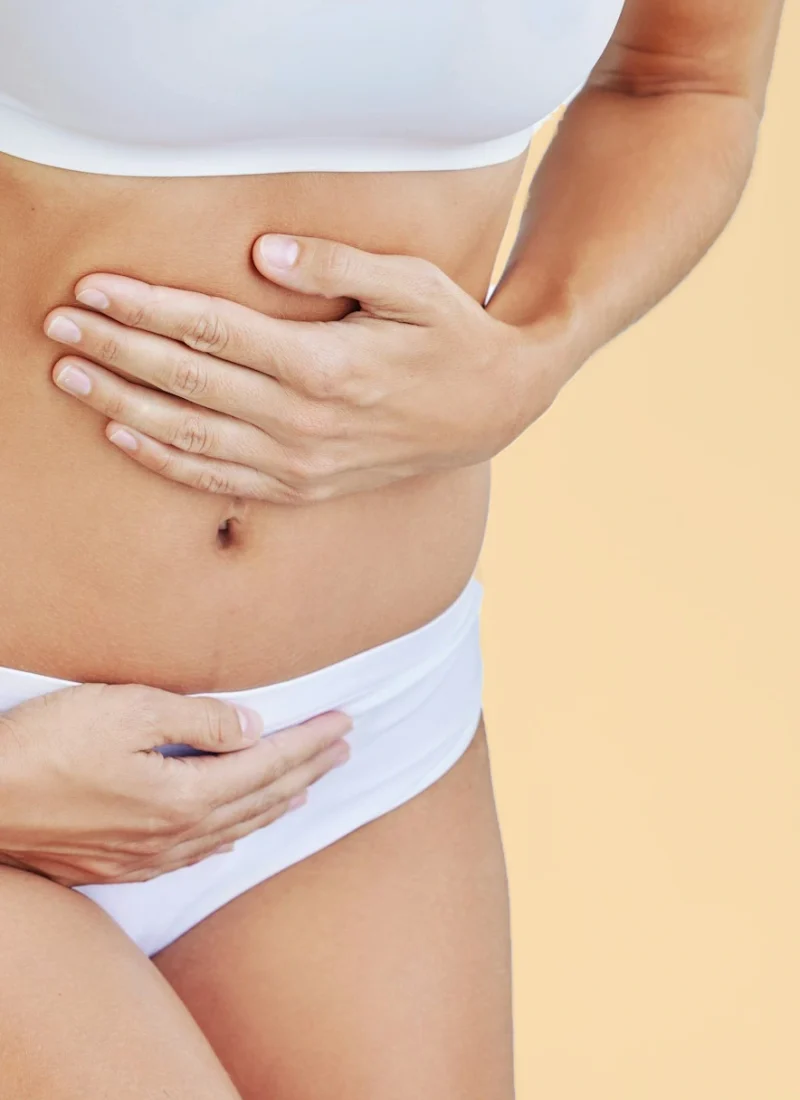Adenomyosis
What is Adenomyosis?
Adenomyesis (ad-uh-no-my-O-sis) is a condition where the tissue that normally lines the uterus (endometrial tissue) grows into the muscular wall of the uterus. Despite being displaced, this tissue continues to behave as it normally would-thickening, breaking down, and bleeding during each menstrual cycle.
This process can lead to:
-An enlarged uterus
-Painful and heavy periods
However, it’s important to note that adenomyosis can also occur without noticeable symptoms, or it may cause only mild discomfort in some individuals.

Symptoms of Adenomyosis
The symptoms of adenomyosis can vary in severity, but common signs include:
- Heavy or Prolonged Menstrual Bleeding: Menstrual periods that are unusually long or excessively heavy.
- Severe Menstrual Cramps (Dysmenorrhea): Intense, sharp, or knifelike pelvic pain during menstruation.
- Chronic Pelvic Pain: Persistent discomfort in the pelvic region, unrelated to the menstrual cycle.
- Painful Intercourse (Dyspareunia): Discomfort or pain during sexual activity.
- Bloating Before Menstruation: A feeling of fullness or pressure in the lower abdomen before periods.
- Chronic Bleeding: Ongoing or irregular bleeding between menstrual cycles.
- Enlarged Uterus: Adenomyosis may cause the uterus to increase in size, which can go unnoticed. Signs of an enlarged uterus may include tenderness, pressure, or heaviness in the lower abdomen.
Causes of Adenomyosis
The exact cause of adenomyosis remains unknown, but several theories have been proposed:
- Invasive Tissue Growth: Endometrial cells from the uterine lining may invade the muscular wall of the uterus. Surgical procedures, such as cesarean sections (C-sections), could create pathways that encourage this invasion.
- Developmental Origins: Some experts believe that endometrial tissue becomes embedded in the uterine muscle during fetal development, as the uterus is first forming.
- Uterine Inflammation After Childbirth: Inflammation of the uterine lining during the postpartum period may weaken or disrupt the natural boundary between the uterine lining and muscle, leading to adenomyosis.
- Stem Cell Origins: A more recent theory suggests that bone marrow-derived stem cells may migrate to and invade the uterine muscle, contributing to adenomyosis.
Regardless of its origin, the growth and progression of adenomyosis are dependent on circulating estrogen levels in the body.


Treatment and Management of Adenomyosis
Treatment focuses on relieving symptoms and improving quality of life, depending on severity, age, and pregnancy plans.
Pain Management
- NSAIDs: Medications like ibuprofen or naproxen help reduce pain and inflammation, especially during menstruation.
Hormonal Therapies
- Hormonal Contraceptives: Pills, patches, or vaginal rings can reduce heavy bleeding and pain.
- Progestin Therapy: Options like oral tablets, the Mirena coil, or implants help manage symptoms.
- GnRH Agonists: Temporarily lower estrogen levels, shrinking adenomyosis-related tissue.
Minimally Invasive Procedures
- Endometrial Ablation: Removes or destroys the uterine lining to reduce heavy bleeding.
- Uterine Artery Embolisation (UAE): Blocks blood flow to affected tissue, reducing symptoms.
Surgical Treatment
- Hysterectomy: Removal of the uterus, a definitive solution for severe cases where other treatments fail.
Lifestyle Support
- Heat Therapy: Heating pads can help relieve pelvic pain.
- Regular Exercise: Physical activity may reduce discomfort and improve well-being.
Real Stories, Real Results
"I have severe endometriosis which leaves me pretty much bed bound some days and this has blown my mind. Significant reduction of pain and the area feels much more free moving."
"I recently purchased Ovrelief product, and I have to say, it has been a game-changer for managing my menstrual cramps. I’ve tried various remedies over the years, but this one stood out for a few reasons."
"Fantastic device, worked incredibly well and quick. Will recommend this to my friends and family!"
"It’s amazing."
"Using it is incredibly easy—just follow the instructions provided, and you'll be good to go. Whether I'm at work or relaxing at home, it fits seamlessly into my routine."
"I have been suffering with endometriosis for years and this is the best thing I've found so far, gave me so much relief thank you so much."
"Honestly one of the best things I could ever get my hands on. The way it subsides pain and helps me get on with my day without constantly being reminded of the pain is amazing. 10/10 product. Love it !!!"
"At first I had no idea what to expect, but as soon as i used it I realised what I had been missing out on for years! I used to suffer from the worst period pains and this device has worked miracles for me. It’s small enough for me to take it everywhere with me and I only charge it for 2 hours to have the maximum experience. Such a helpful device, and so convenient to use. Definitely recommend."

